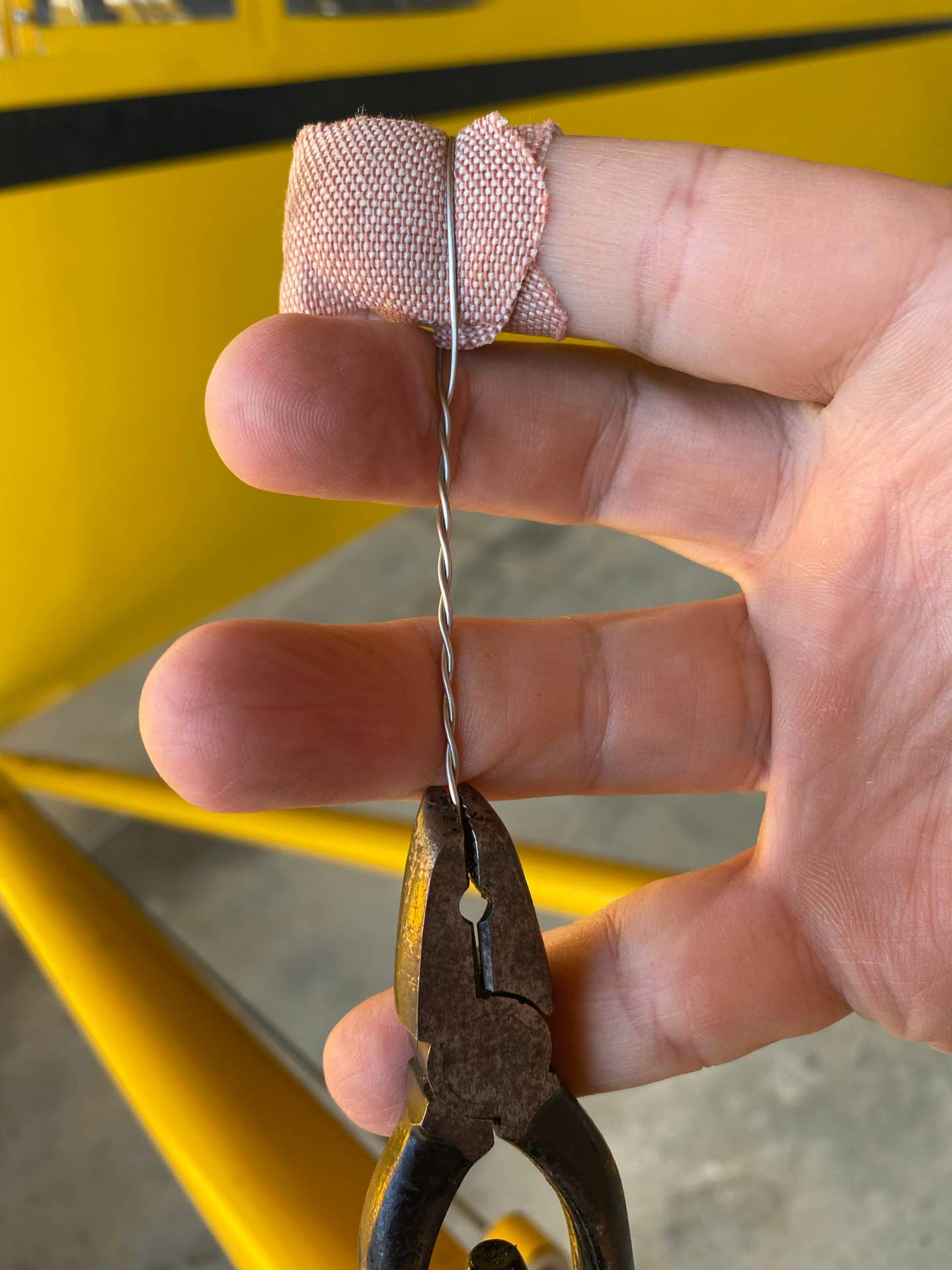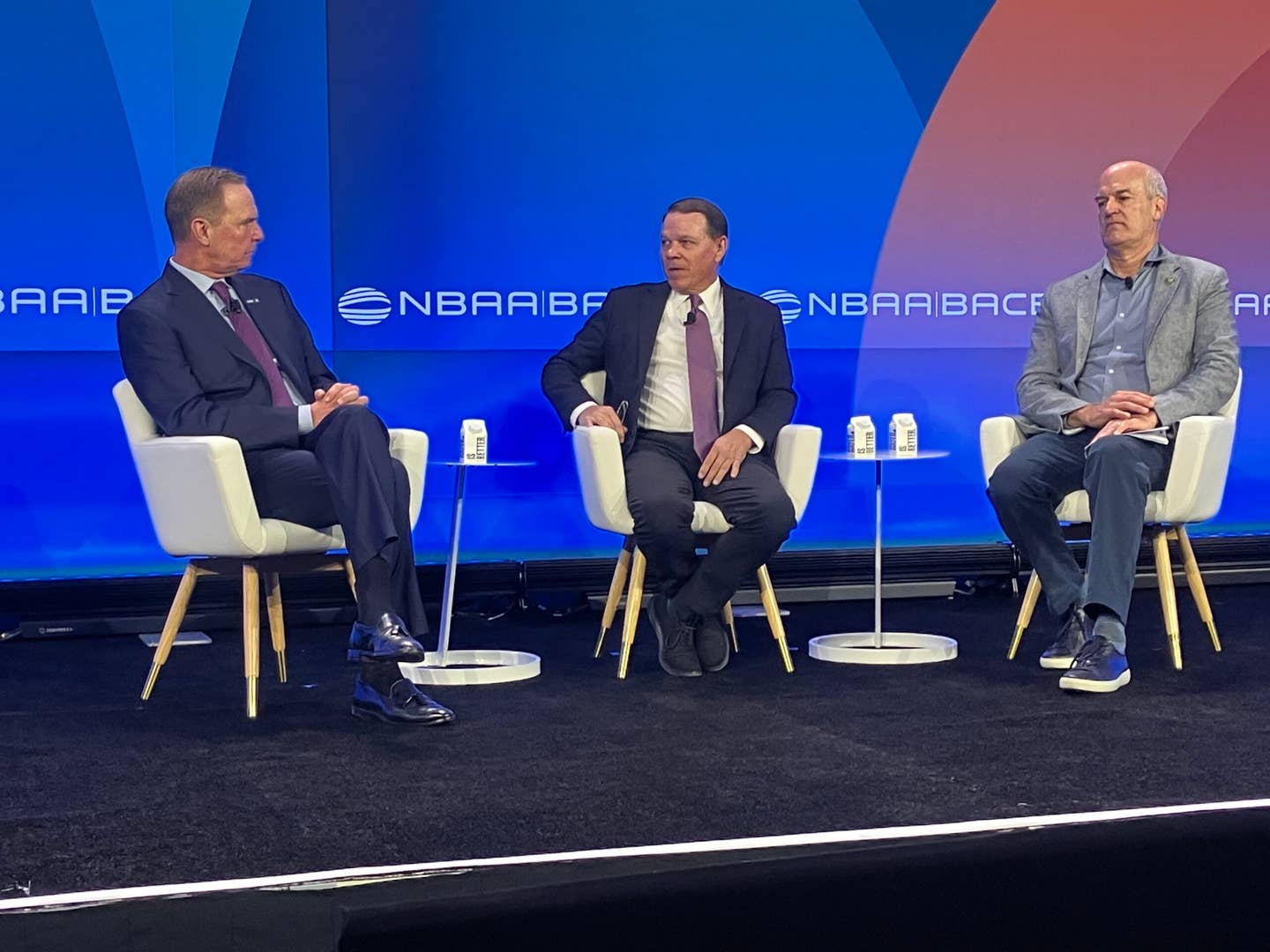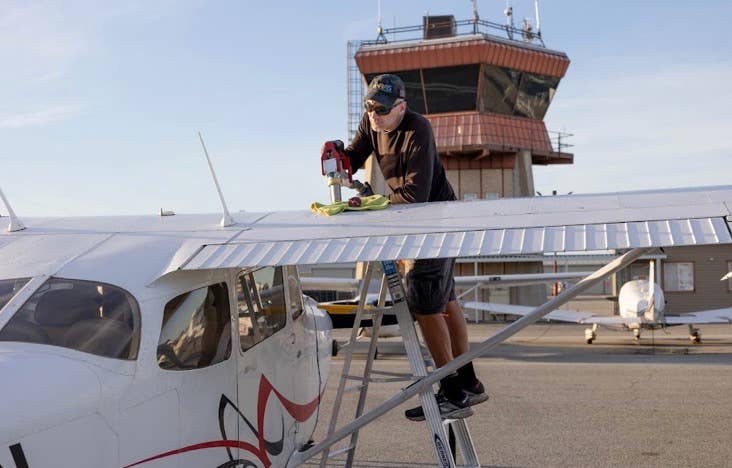Did You Do That Safety Wiring?
Well, yes, seeing as how it’s my airplane, I guess I did. Why do you ask?

There are certain questions that you just naturally don’t want to hear. For example, “Is this the last beer?” or “Do you know how fast you were going?” or a variation on that, “Didn’t you hear me tell you not to cross that runway?”
I’ve heard the second question in that list more times than I can count, most recently last week. My answers never seem to rise to the level of creativity that would cause the officer to fold the ticket book and say, “That was so good, I’m gonna let you slide.” But last week—busted for 33 in a 25—the pandemic saved me. The officer mentioned something about COVID-based slack and I got a warning instead.
The question I detest the most, however, is this: “Did you do this safety wiring?” There is no percentage in lying because this is what’s known in both the legal and aircraft mechanic trade as a leading question. The interrogator is fully aware of the answer and is only awaiting the victim’s reply to key gales of laughter. It’s even worse if there’s no laughter but just a wry smile that telegraphs that the wearer hasn’t seen safetying this bad in 45 years of swinging wrenches but is too polite to mention it.
My safety wiring isn’t always that bad, but sometimes it causes even me to pause in wondrous appreciation of the heights to which human ineptitude can soar when propelled by the tug of a shiny knurled knob. Safety wiring isn’t that hard. Good safety wiring is a dark art that makes performing a heart transplant seem like making a cheese sandwich. I’ve done enough re-dos on the same set of bolts to make me wonder if it would be better to just unspool 10 pounds of wire and crumple it up on the floor before even starting in the hopes that the first try would click.
My last safety wire work was on the Stromberg carburetor in the Cub. Pulling the thread backward, the reason I had to do that was because I had disassembled the carburetor. And the reason I did that was because I entered the hangar the day before to find a sizable puddle of gas under the airplane, dripping from the bottom of the carburetor. Now if you know anything about Strombergs, you know that they have like three parts—you could make one out a beer can and a couple of nails in about two hours. You’ll need a pair of shears and a drill for the metering jet, but you could probably use one of the nails for that.
Anyway, if gas is leaking out the bottom, the only thing it could be is either a stuck or gas-logged float or something in the float valve seat, right? “Right,” says my IA friend Dan. So I’ll just take the carb off and look-see. This is easy except for ^%$ bastard nut at the back of the carb that takes five times as long to remove as it did to overhaul the engine. When the last screw was removed and I opened the float chamber—nothing. The float was perfect and nothing was in the valve seat except … the valve seat.
What the actual ^%$)? Inspecting the now carburetorless engine, I notice it’s still dripping gas. What the actual ^%$)? It’s coming from the primer line, which enters the intake manifold above the carburetor. Jiggling the plunger causes it to stop. These things happen with 82-year-old airplanes, but I have to admit, I’d never seen that one. Nine hours later, I got the float chamber screws safetied in such a way as to not constitute a Class A felony and the ^%$ bastard nut was re-secured.
The lesson for you here should be obvious. Gas leak? Jiggle the primer and go have a smoke—outside the hangar, of course—and come back. If you don’t smoke, start. If the leak stops, you have benefited from my quiet, but confident incompetence.
You’re welcome.
I learned another interesting thing that day not related to old airplanes but the current social condition. At the end of one of the hangar sections are bathrooms, one for men and one for women. Things being as they are these days, if the men’s is occupied, I just use the women’s. (So sue me.) I was shocked to learn it’s painted pink. Pink! The men’s side is blue. I was further surprised to learn that while the men’s side has both GoJo and regular liquid soap, the women’s side has just the soap.
Is this a budget thing or a suggestion that women don’t get their hands greasy working on airplanes? While you contemplate that, I have a big box of aborted safety wire to carry to the scrap bin. Two pick-up loads should do it.






